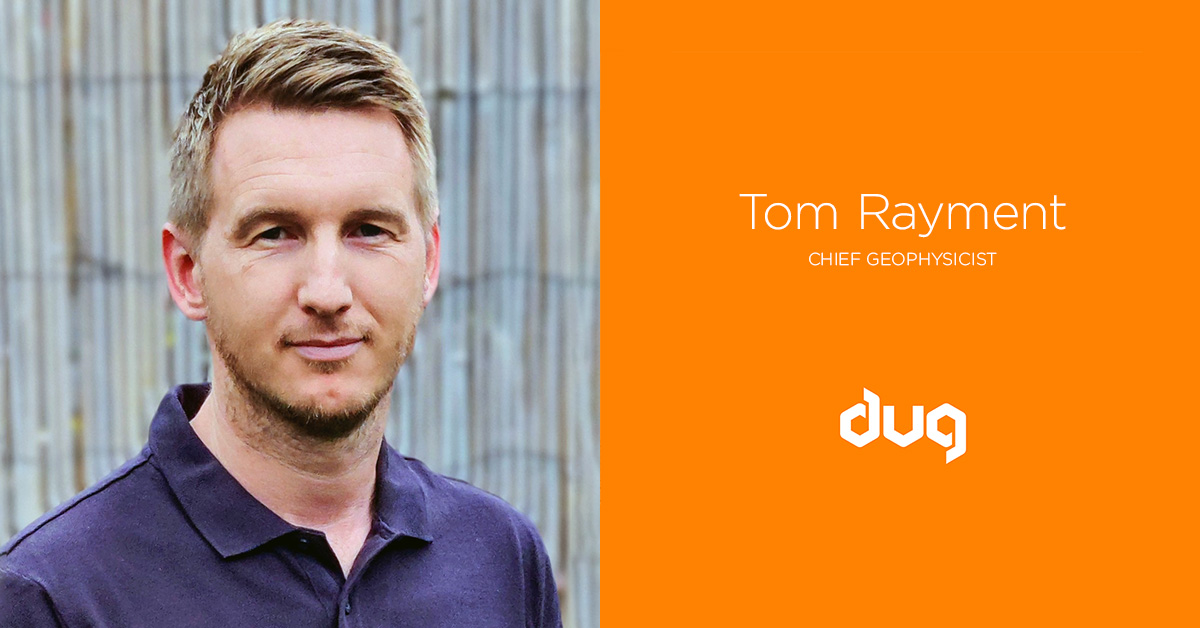Tom has been with us for almost a decade and took up the role as our chief geophysicist in 2020. He has been instrumental in providing geophysical technical leadership to our team of dedicated data scientists, as well as in developing DUG’s technical capabilities in the geoscience space.
We’re excited to have a chance to chat with him and get to know him even more!
Tell us a bit about yourself and your role.
I left university back in 2004 and started work as a Junior Geophysicist after seeing an advert in a local newspaper, which is probably not the usual route into this industry! I joined DUG in 2013 and recently returned from a secondment at our headquarters in Australia which was a fantastic experience.
As Chief Geophysicist, my primary focus is to work with our amazing R&D team to continue developing software and algorithms that advance our science. Much of my time is committed to sharing that work with our clients and also to supporting our Services teams and ever-growing DUG McCloud user base so they can achieve the best results possible. Outside of work I enjoy cycling, golfing and spending time with my wife and our two young children.
What sparked your interest in geophysics?
At university I studied maths so I was largely unaware of what geophysics entailed until I started my first job! Many of my peers at university moved into finance but that never appealed to me—I wanted to be involved in the sciences and fell into geophysics almost by accident.
But my interest grew as I learned more and more about the subject and indeed that’s one of the most enjoyable aspects of this job—you never stop learning. It’s also very cool that we are looking many kilometres deep into the Earth, visualising structures on a grand scale that are millions of years old!
What accomplishments are you most proud of at DUG?
There are many but I think two stand out. Firstly, starting up DUG’s UK office back in 2013 with a handful of colleagues in a small office in London was a huge challenge but we worked hard and grew the business to where it is today—which is one of the leading processing and imaging centres in the world. To make that leap in such a short period of time is a huge achievement.
Secondly, and more recently, being involved in the technological breakthroughs that our R&D team have delivered, especially with respect to machine learning and full waveform inversion (FWI) imaging. Both of which will, I believe, completely change the way we approach geophysics.
As Chief Geophysicist what is your vision for DUG’s future in geophysics? How do you plan to shape it?
I expect us to continue our role at the forefront of geophysics R&D, and to further enable our Services teams and DUG McCloud clients to get more from their data.
I’m excited to see how our recent innovations, especially with respect to FWI, change the processing and imaging landscape. Our goal is always to provide better data, faster. These latest developments, combined with our green high-performance computing, enable us to provide our services in a more efficient and environmentally sustainable way than ever before. My role is to continue to drive innovation to build upon those achievements into the future.
What are the best pieces of advice you’ve ever received?
I like the idea, often used in the field of medicine, of “see one, do one, teach one”.
Observing and copying a process or best practice is an important step but demonstrating it and explaining it to someone else really forces you to understand the details. And make sure you take lots of notes!




































